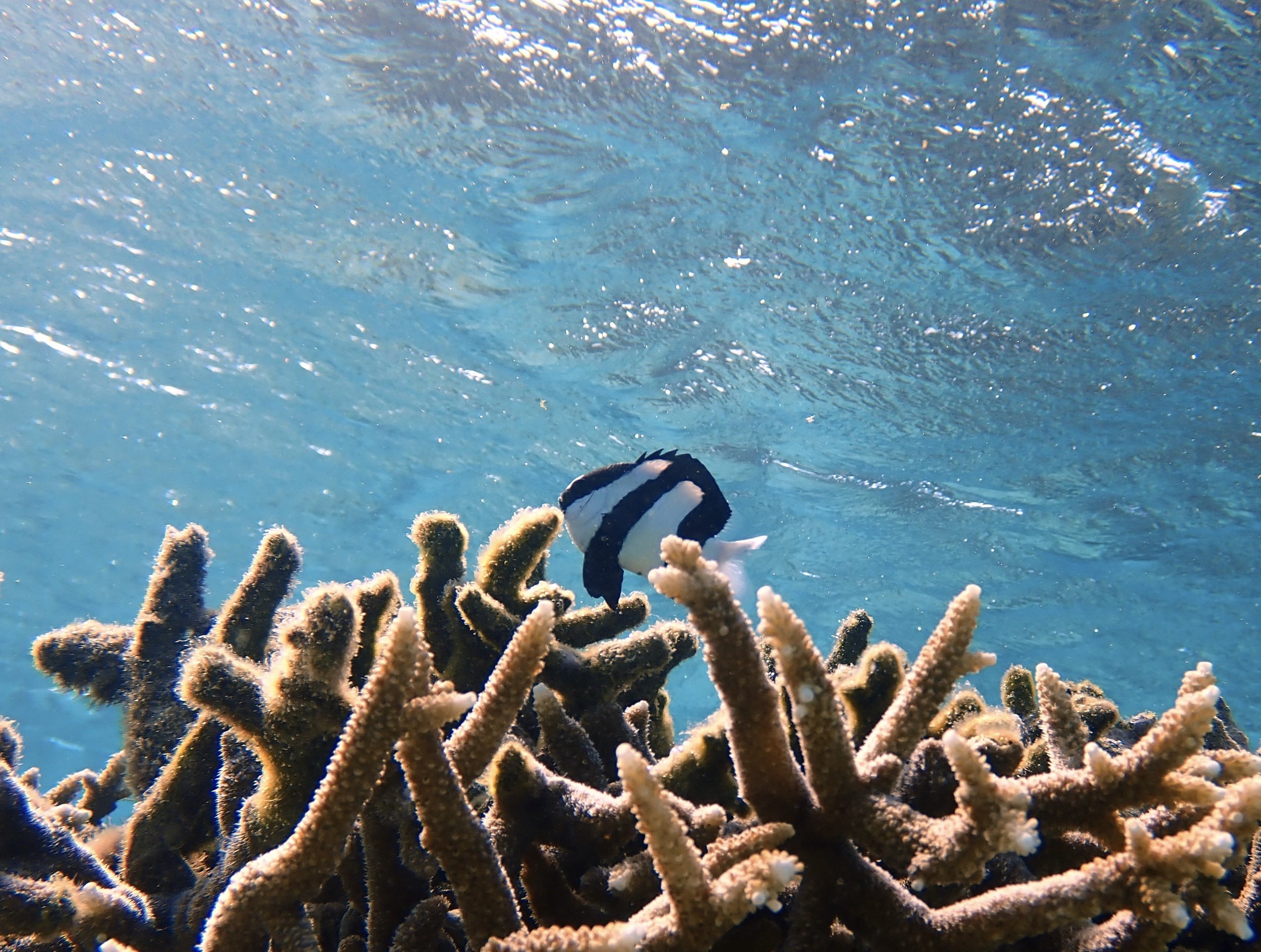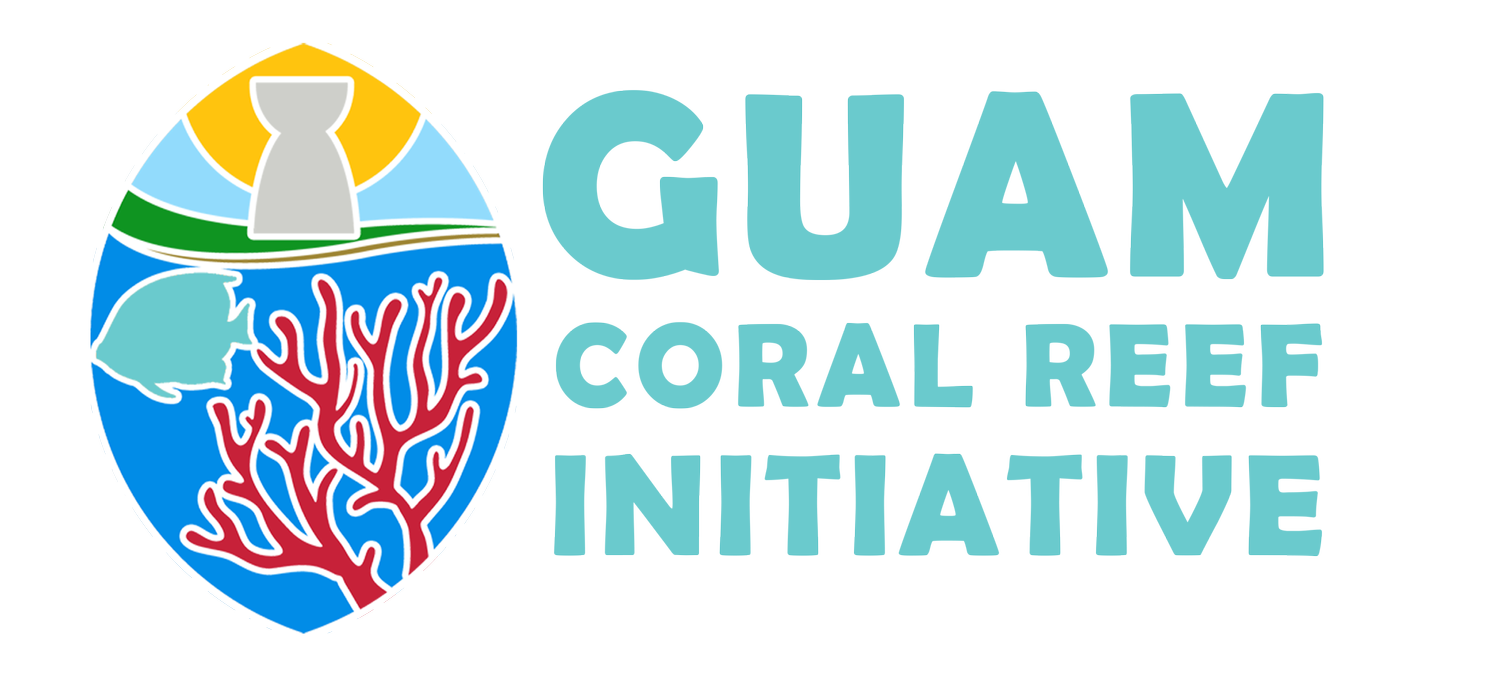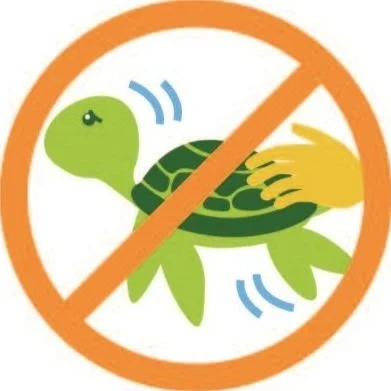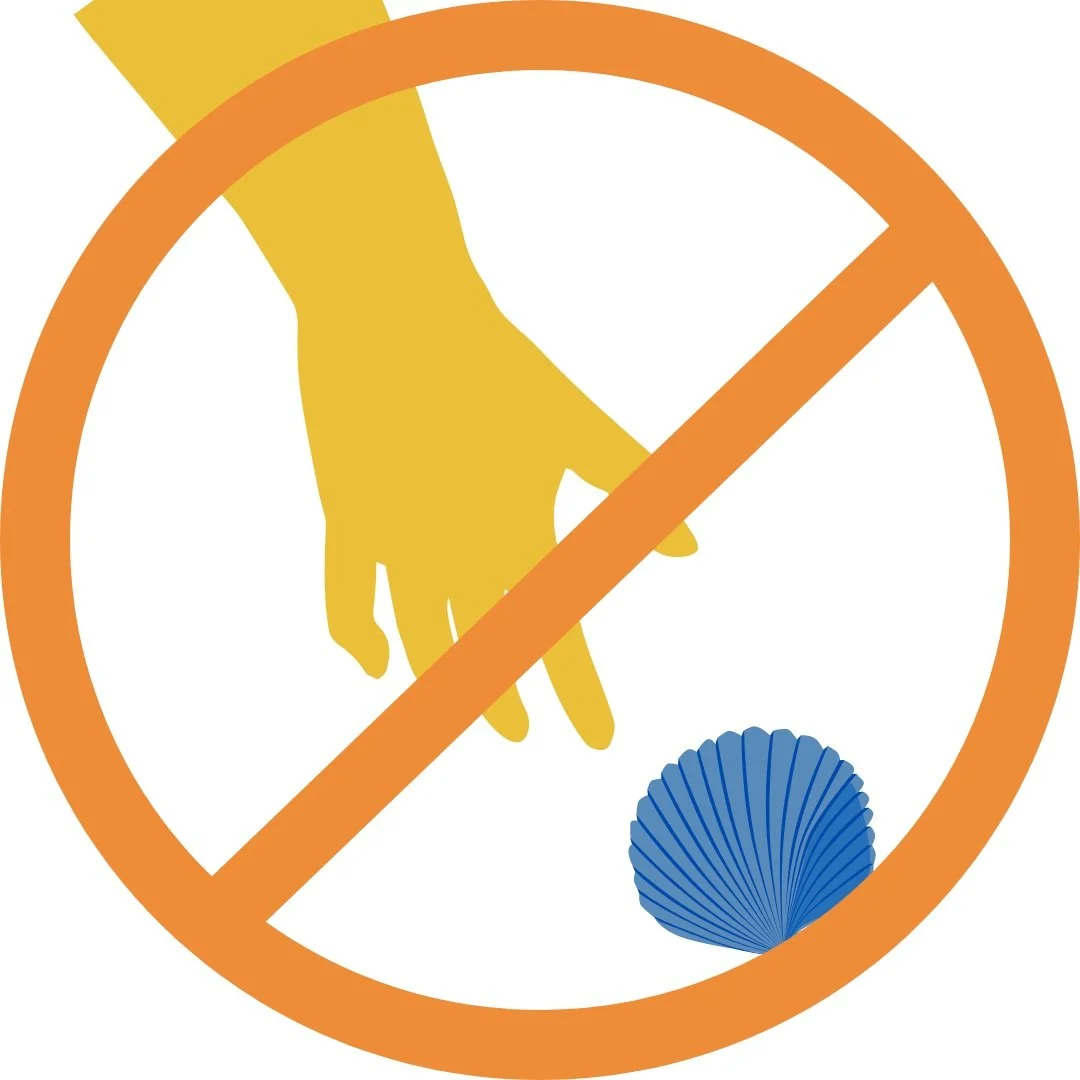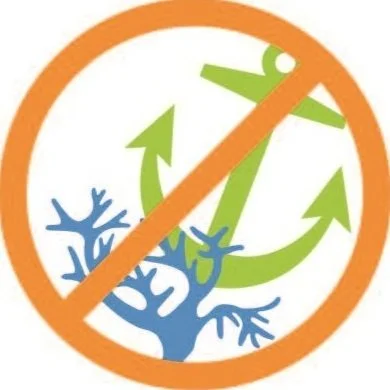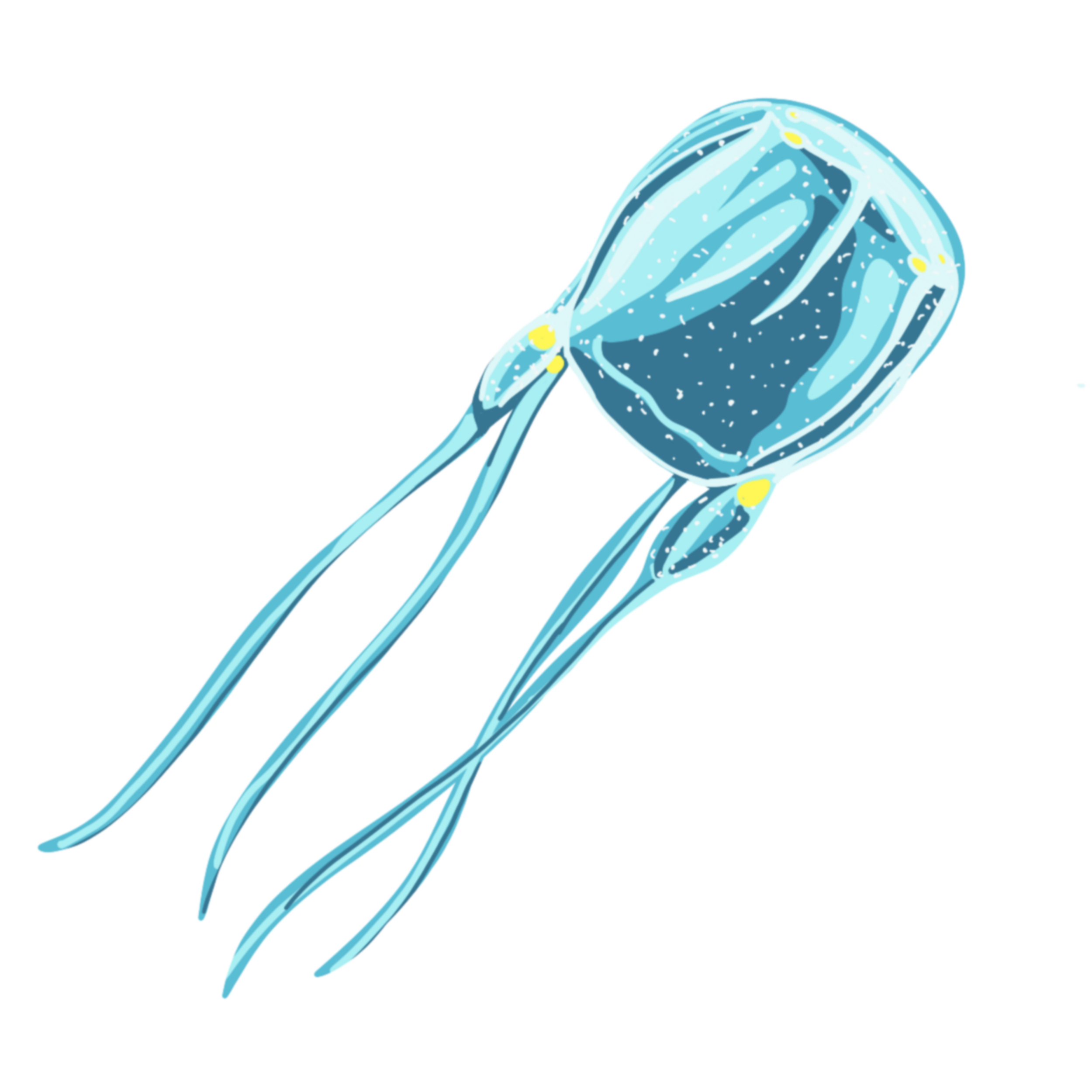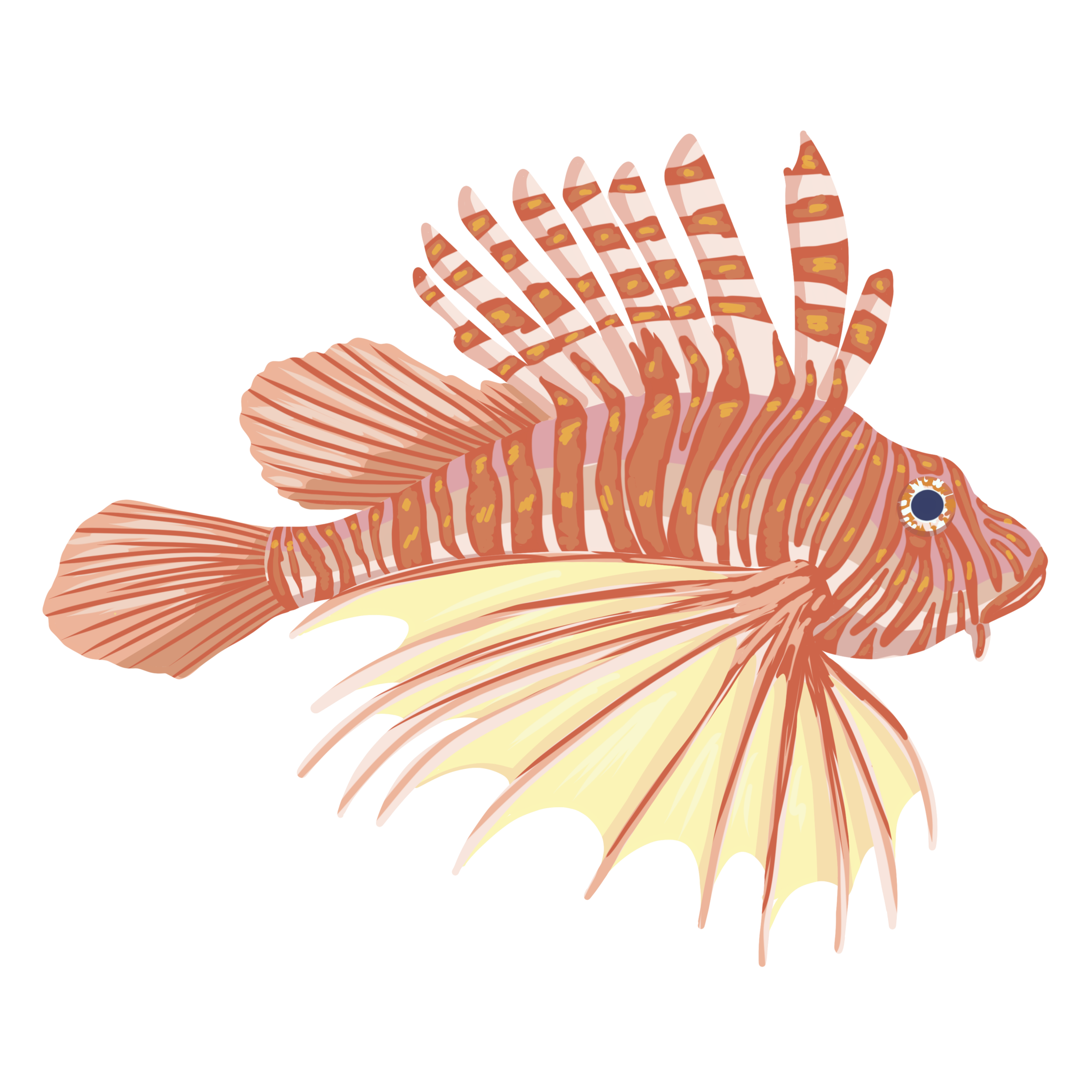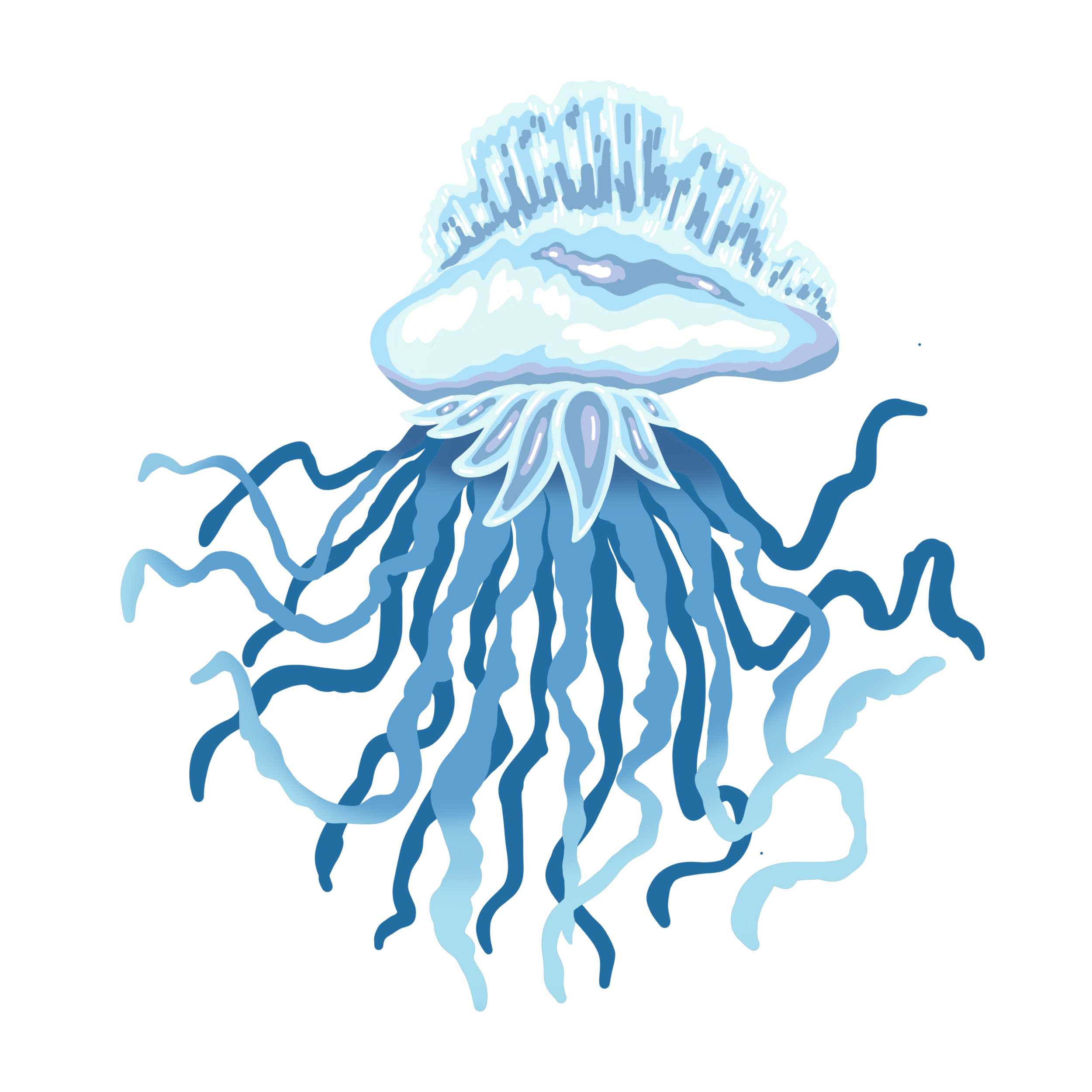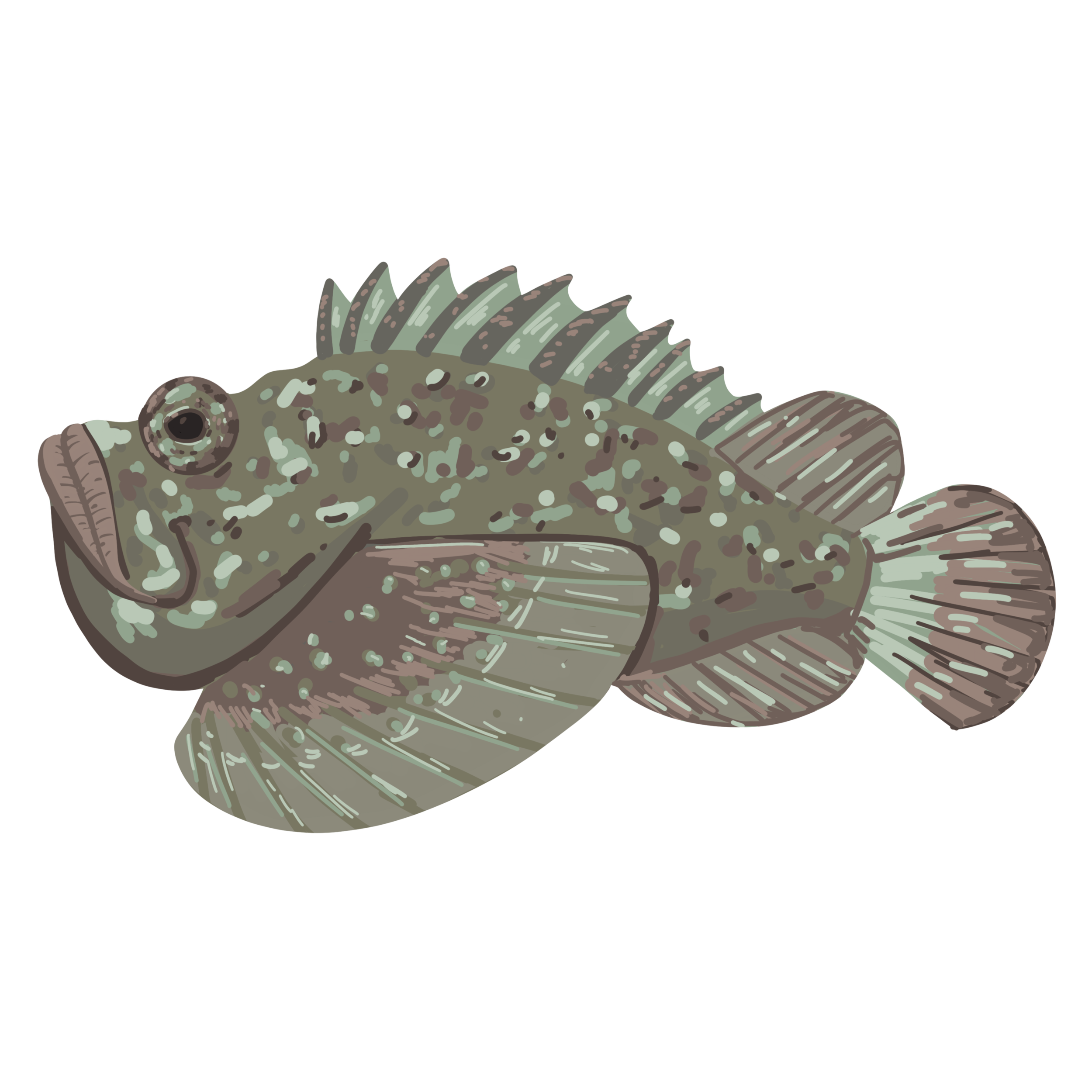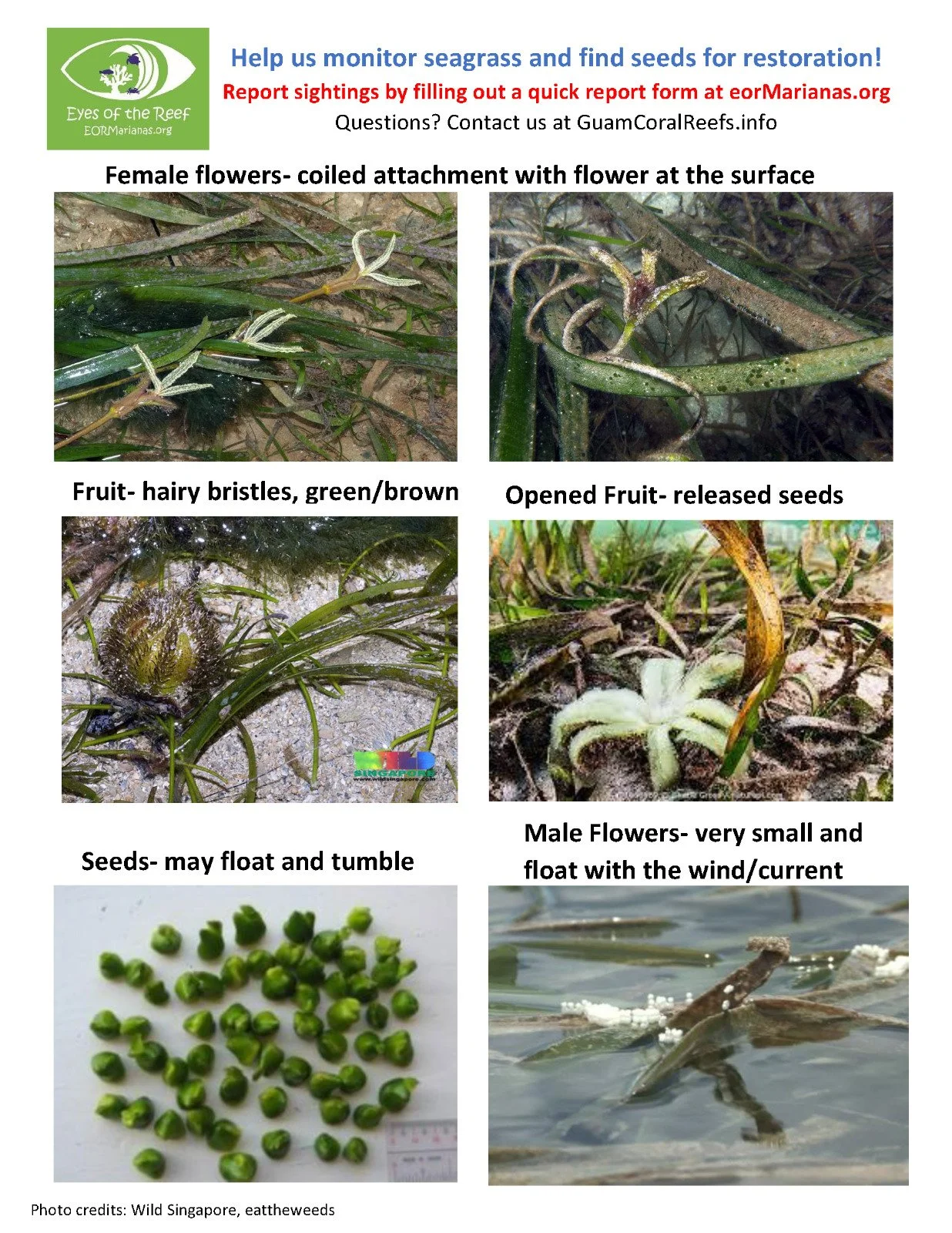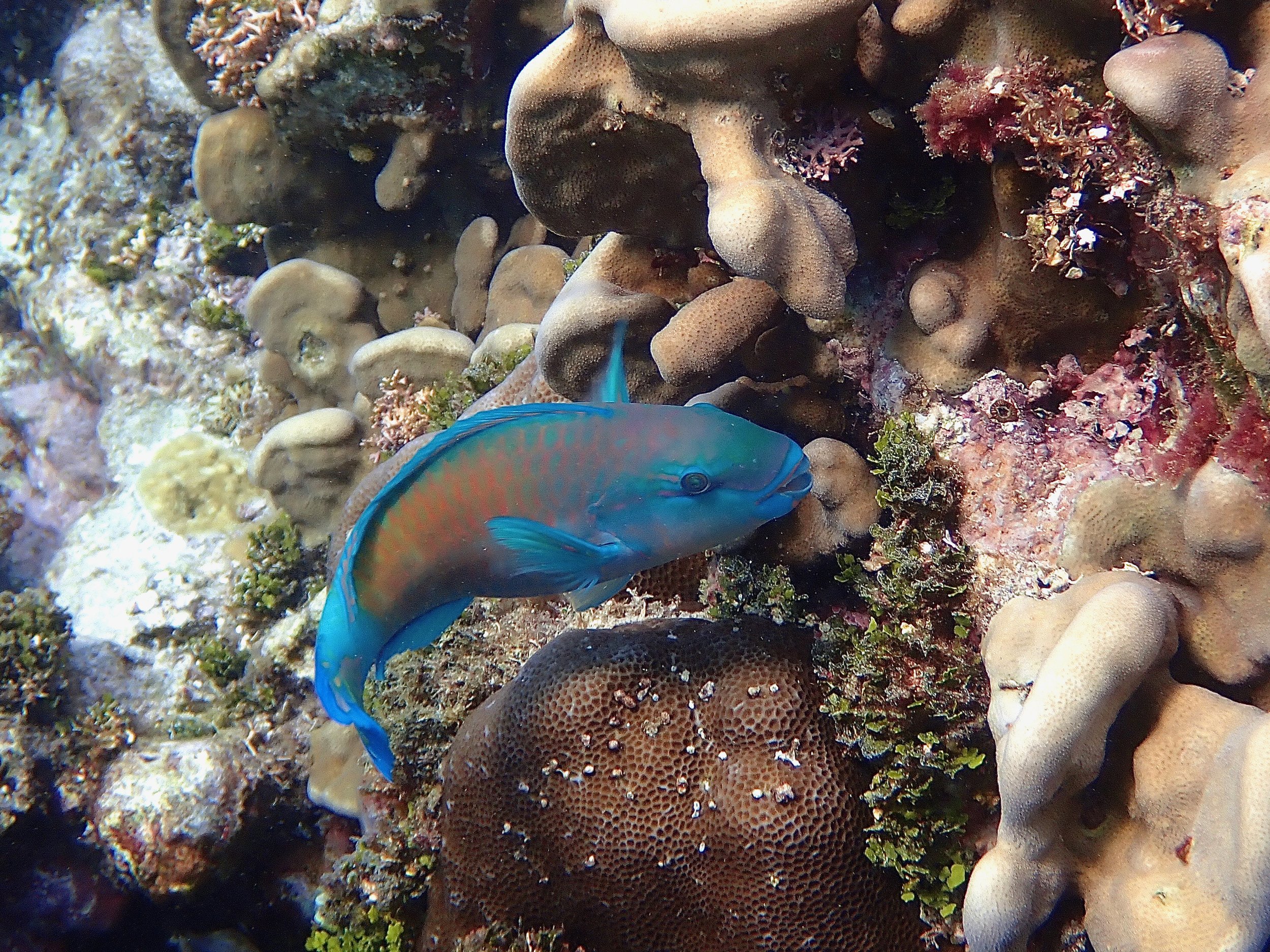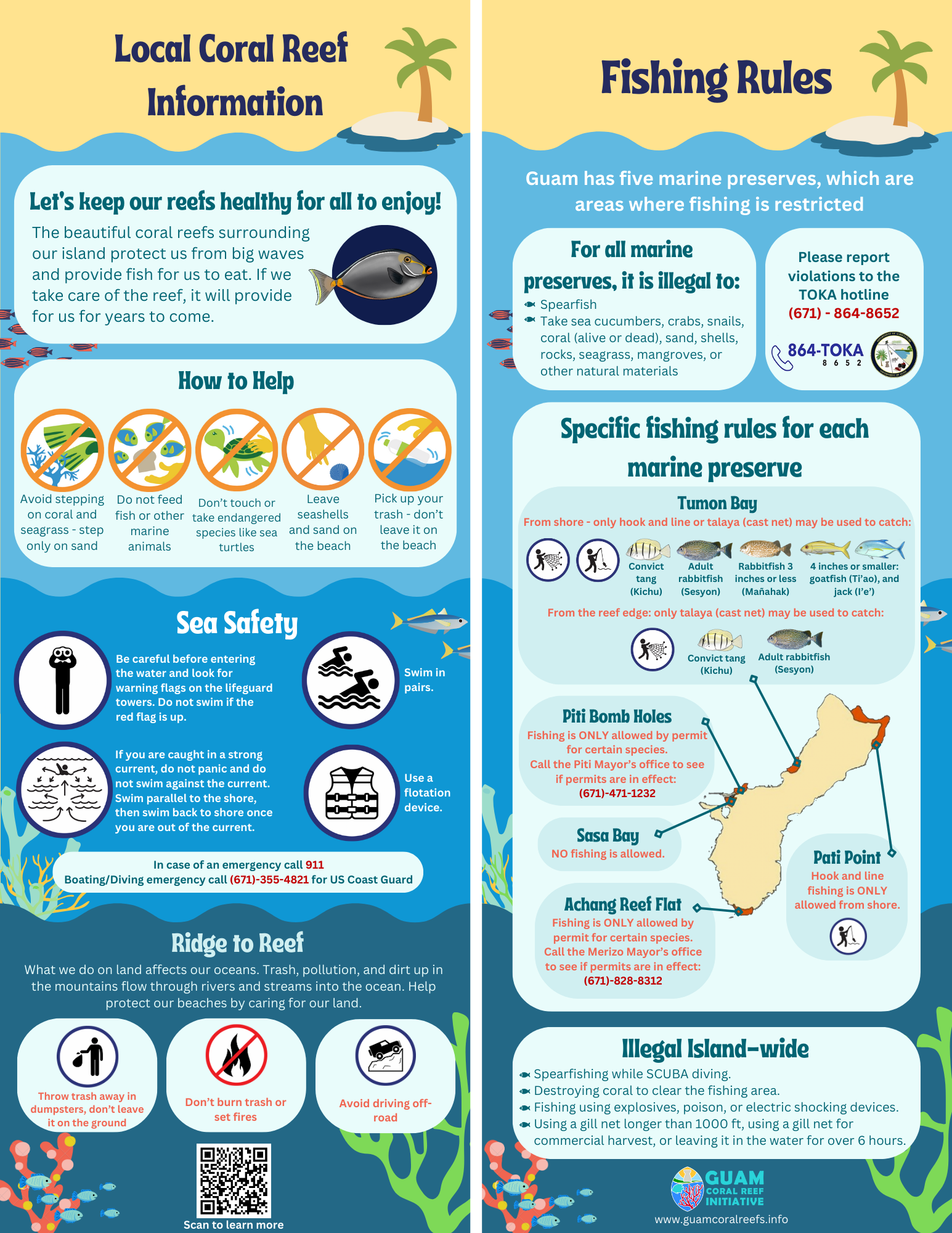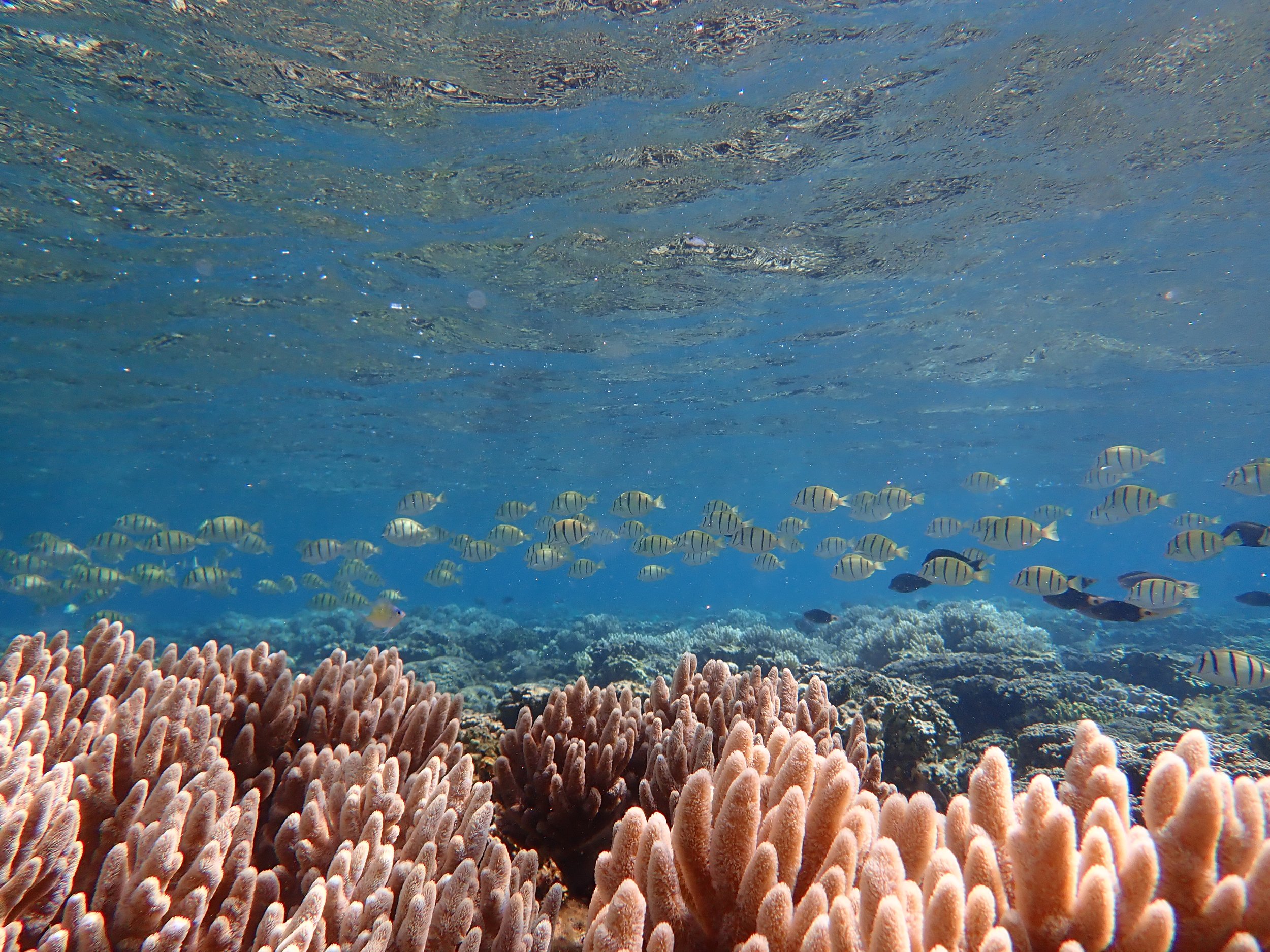
Reef-friendly tips
Protecting the Reef Begins with Everyday Choices
No matter where you live, your choices can still impact coral reefs
-
Most sunblocks actually contain chemicals that kill corals!
Is your sunblock reef-safe? Look at the list of Active Ingredients to find out:
Reef-safe ingredients: Non-nano Zinc Oxide, and Non-nano Titanium Oxide
Unsafe ingredients: Oxybenzone, Avobenzone, Avobenzine, Octinoxate, Ethylhexyl Methoxycinnamate, Homosalate, Octisalate, and Octocrylene
Reef-safe sunblock may even be safer for us humans too, so it’s a good option to use for any outdoor activities, even if you don’t plan to explore the reef.
Check out our “Reef-Safe Sunblock Guide” below to learn more!
Sources: National Park Service and NOAA
-
It can kill sea creatures and coral!
Marine animals can eat and get tangled in debris. Even litter far away from the ocean can easily make its way down to the coast through rivers, streams, and wind, so it’s important to never leave any trash behind. When visiting the beach or going on outdoor adventures, remember to “pack it in, pack it out” and “leave no trace!”
The oceans of the world are all connected by currents, so ocean trash from one part of the world can easily drift over to Guam and other coral reef habitats. Make sure not to leave any trash behind, no matter where you live in the world.
-
They belong in the ocean where they are home to many sea creatures!
Corals and shells sold in stores are usually taken from the wild. By refusing to purchase these items, you help to keep these natural resources in the wild where they can continue to provide shelter for other animals.
-
The less we use, the less will get into the ocean where it can harm marine life.
Plastics are a huge threat to coral reefs and can take hundreds, even thousands, of years to degrade and decompose. Even with our best efforts to properly dispose of waste, plastic can still get into the ocean and cause problems for marine life. You can be a part of the solution by starting at the source and reducing the amount of plastic you use!
For example:
Use a reusable water bottle instead of buying plastic bottles
Use reusable grocery bags instead of plastic bags
Carry reusable utensils and straws with you and refuse plastic ones
Buy pasta and other food items that come in recyclable cardboard boxes or glass jars instead of plastic packages
Use reusable snack bags and food containers instead of disposable ones
-
In general, it’s better for the local economy and the environment.
Buying local seafood supports local fishers and also reduces the environmental impact of importing seafood from other places.
Another alternative is to catch your own seafood using sustainable practices! Scroll down to the ‘Fair Fishing’ section to learn more about reef-friendly fishing methods and local fishing rules.
Even if you don’t live near the ocean, the seafood you eat may have come from a reef! Choose your seafood wisely to avoid contributing to overfishing on coral reefs.
Check out the Monterey Bay Aquarium’s Seafood Watch guides for tips on buying sustainable seafood!
https://www.seafoodwatch.org/recommendations/download-consumer-guides

Ridge to Reef
Photo by Guam DoAg Forestry
Everything is connected; what we do on land affects our seas
Trash, pollution, pesticides, and sediment find their way into the ocean from the tops of the mountains (Ridge) through rivers and streams all the way down to the ocean (Reef). Help protect the reef by caring for our land!
-
Fires kill large areas of vegetation, freeing up sediment (dust and dirt particles) to be carried into our streams, rivers, and coastal waters whenever it rains. Lots of sediment flowing into the ocean smothers corals, leading to sickness and even death.
100% of Guam’s wildfires are started by humans. To prevent wildfires, avoid burning household trash, or only do so when you can closely monitor the fire and put it out if the weather becomes windy. Discarded cigarettes can also start wildfires, so always make sure to put out the embers and dispose of them in a trash can instead of tossing them on the ground.
-
Driving off-road tears up vegetation and can transform upland areas into badlands: a kind of terrain with little to no plant growth. With no plant roots to anchor the sediment, it flows freely onto nearby reefs and causes problems for the corals.
The best way to prevent this damage is by stopping off-roading altogether. An alternative is to avoid off-roading after heavy rains or when the soil is especially muddy.
-
Native plants are best suited to grow here in Guam and contribute to the ecosystem. Their roots will stabilize the hillside, reducing the amount of sediment that flows from upland areas down to the ocean during rain storms. Native plants also help provide habitats for native species.
Follow the Guam Department of Agriculture Forestry Division on Facebook for upcoming tree-planting events: https://www.facebook.com/DOAG.Forestry
Rain gardens help to catch rainwater and prevent it from flowing freely into the ocean. This reduces the amount of pollution and sediment that gets onto our coral reefs. A rain garden is also a great way to grow your own fruits and veggies!
Follow Guam DoAg Agriculture Development Services (ADS) on Instagram for tips on growing your own garden: @doag.adsguam
-
On Guam, we have two invasive feral ungulates (hoofed mammals): the Philippine deer (Rusa marianna), and the feral pig. Both of these species constantly graze on native plants, which reduces plant cover in upland areas and contributes to sediment runoff when it rains.
You can help to control invasive deer and pigs by participating in annual hunting derbies hosted by the Guam Department of Agriculture.
Follow the DoAg Division of Aquatic and Wildlife Resources (DAWR) on Facebook for upcoming derbies: https://www.facebook.com/doag.dawr
If you don’t live in Guam, support your own community’s local efforts to cull invasive species on land and at sea.
-
Dumping trash on the ground, throwing out household wastewater and chemicals, and dumping animal manure are practices that will harm environments on land and at sea. All of these materials and substances can be easily carried into the ocean, where they can damage corals and cause bleaching.
Tips for reducing your pollution:
Make sure to dispose of all trash in a dumpster.
Reduce your use of pesticides, and replace household chemicals with water-based products whenever possible to reduce the chances of these chemicals ending up on the reef.
Clean up all pet feces and dispose of manure in the landfill or in compost facilities.
Never dump used oil or other chemicals down the storm drain where they will flow to the ocean, but dispose of them in hazardous waste facilities.
Where to safely dispose of waste in Guam: https://www.gswa.guam.gov/gswa-household-hazardous-waste-facility

Take nothing but pictures
Leave nothing but bubbles
Kill nothing but time
Follow All Marine Preserve Rules
Guam has five marine preserves, which are areas where fishing and harvesting are restricted so that marine species can thrive. Think of these preserves as “safe zones” for fish, corals, and other marine life! These safe zones help to ensure that healthy habitats and healthy populations of marine species will be around for future generations to enjoy.
Each marine preserve has its own specific laws about which activities are allowed, so please make sure to familiarize yourself with these laws before visiting a marine preserve.
-
Engage in spearfishing or any other form of fishing unless otherwise specified
Harm or chase marine life
Take sea cucumbers, crabs, snails, coral (alive or dead), or other marine life
Take sand, shells, rocks, seagrass, mangroves, or other natural materials
Click here for more information on local marine preserves and laws:
Beach Guidance
Learn 3 easy steps to protect Guam’s coral reefs when enjoying the water. Video produced by former GCRI Coral Fellow, Mallory Morgan.
Dangerous Marine Life
For your own safety, please be aware of your surroundings and avoid contact with the following species. In the instance of a sting or bite, remain calm and call 911.
-
Barracuda
-
Box jellyfish
-
Crown-of-thorns sea star
-
Moray eel
-

Black-tip reef shark
-

Fire coral
-
Lionfish
-

Hammerhead shark
-
Portuguese man-of-war jellyfish
-
Sea urchin
-
Cone snail
-
Stingray
-
Stonefish
-
Bristleworm
Ocean Safety Tips
Look for posted signs of hazards or warning flags on the lifeguard towers. Do not swim if the red flag is up.
Use a lifejacket or floatation device
Always swim with a buddy
Rip Current Safety
If you feel caught in a strong current or undertow, do not panic and do not swim against it. Instead, swim parallel to the shore, then swim back to shore once you are out of the current.
Watch this video on rip current safety or click the button below to learn more:
-
For wave, wind and tide conditions, call DIAL 211 or visit the National Weather Service website: https://www.weather.gov/gum/
For ocean water quality information: https://epa.guam.gov/beach-report/current-beach-report/
-
For general emergencies: call 911
Boating/Diving emergencies: call 1-671-355-4821 for US Coast Guard
Other Ways to Help
Report Coral Threats
Want to know how you can help protect the reef? Let us know what you see! We want to know if our reefs look sick, damaged, or tangled up in marine debris. It’s also very important to report sightings of coral bleaching and Crown-of-Thorns sea stars (COTS) because early detection helps us take action as soon as possible. Report sightings and observations of coral reef threats to the Eyes of the Reef Marianas program by clicking the blue button below!
Crown-of-Thorns sea star, Acanthaster cf. solaris
A thicket of Staghorn Acropora pulchra bleaching on the western reef flat by Adelup in 2016
Report Violations
If you see someone violating marine preserve rules or other environmental laws, call the TOKA hotline! This hotline alerts Conservation Law Enforcement to the issue so that they can keep our reefs safe.
-
Fishing in a no-take marine preserve
Illegal dumping
SCUBA spearfishing
Using explosives or poison to capture fish
Removing or relocating live coral
Report Seagrass Observations
Seagrass flowers in Guam are quite mysterious and scientists aren't sure when, where, and how often they produce flowers. Please help us keep an eye out and let us know if you notice any seagrass flowers in the water. Seagrass is a flowering plant but its flowers don’t look like what you might expect, so refer to this guide to help you know what to look for!
Practice Fair Fishing
Fish are an important part of the coral reef ecosystem. Each species has a unique role: some graze on algae that would otherwise smother corals, others are apex predators who keep prey populations in check, and some even help other fish stay clean by picking away the parasites on their skin. When one species is overfished, it can affect the entire ecosystem
Fishing fairly is all about taking extra measures to ensure that we don’t take more than our fair share from the reef. This will not only help to keep Guam’s reef ecosystems healthy but also means that there will be more fish around for future generations of fishers.
Here are some suggested practices for fair fishing:
Measure your catch to see if it meets the minimum recommended length (a.k.a. “L50”) and consider tossing the fish back if it doesn’t meet the minimum
Only take what you need
Follow fishing rules for marine preserves
Make sure nets or other gear are not left behind
Do not drop your anchor in reef areas because it kills the coral! Use mooring buoys or drop anchor in sandy areas instead
